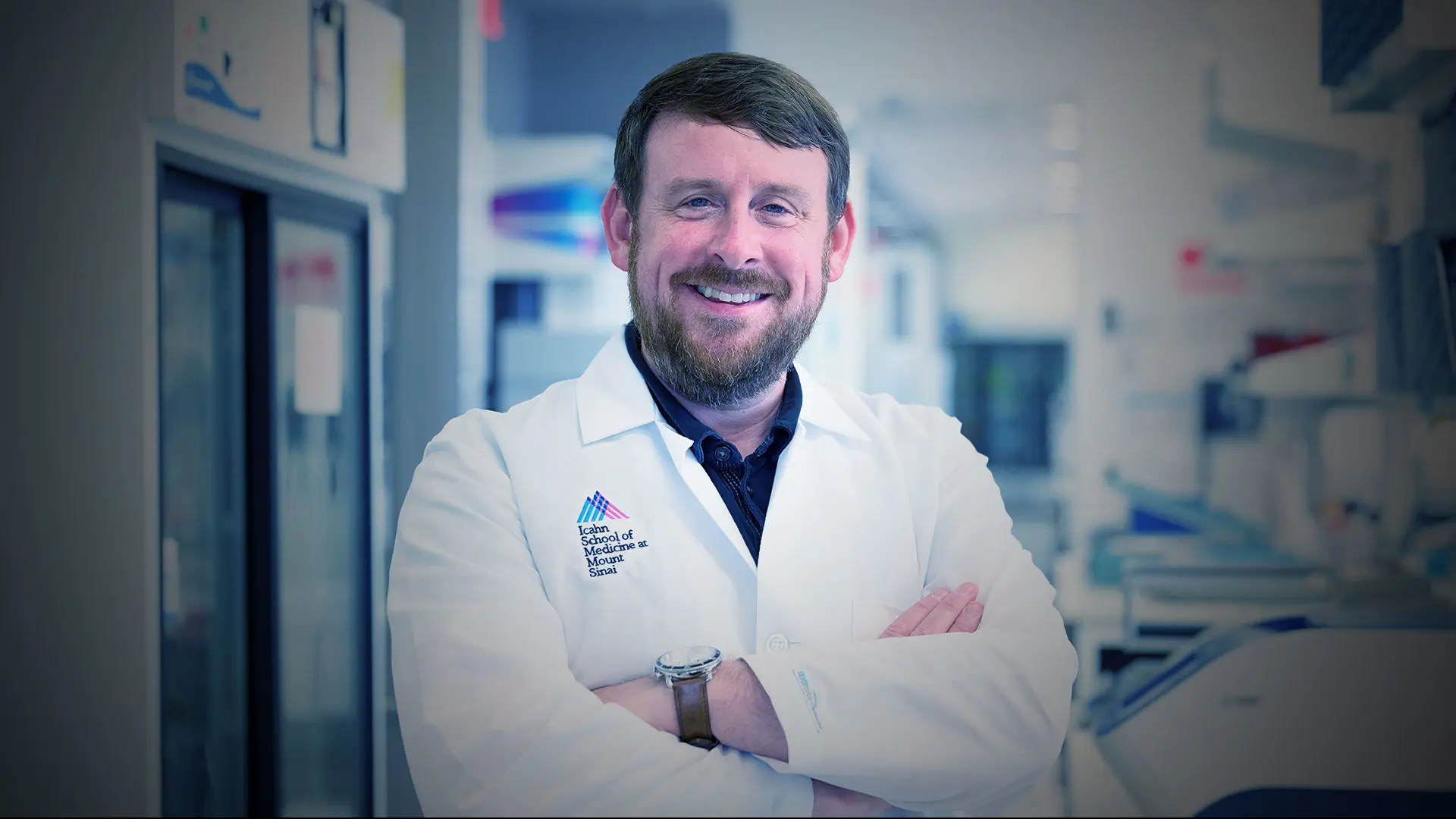For decades, scientific dogma held that the chemicals dopamine and serotonin served as messengers within the central nervous system, allowing brain cells, or neurons, to communicate with each other. Known as neurotransmitters, dopamine and serotonin also contribute to drug addiction and depression.
But neuroscientist Ian Maze, PhD, had a nagging suspicion there was more to their story, and when he established his lab at the Icahn School of Medicine at Mount Sinai in 2014, he began to build tools that would enable him to explore the full range of their power.
Today, his research has upended the scientific dogma about dopamine and serotonin, showing that in addition to their role as messengers, the chemicals are able to change the fundamental biology and behavior of brain cells.
Dr. Maze's significant discovery opens new areas for research.
His significant discovery opens new avenues for research into other neurotransmitters in the human body, including histamine and norepinephrine, and new possibilities for treating a range of diseases. These include post-traumatic stress disorder, Parkinson’s disease, and even breast cancer and gastrointestinal disorders, which can be associated with a large buildup of
serotonin in the cells.
In September, Dr. Maze, Associate Professor of Neuroscience, and Pharmacological Sciences, at Icahn Mount Sinai, was named a Howard Hughes Medical Institute (HHMI) Investigator, a highly selective and prestigious award that will provide his lab with millions of dollars in funding and support for years to come.
“This is a tremendous honor,” says Dr. Maze, who received his doctoral degree at Mount Sinai under the mentorship of Eric J. Nestler, MD, PhD, Dean for Academic and Scientific Affairs, Director of The Friedman Brain Institute, and the Nash Family Professor of Neuroscience. “I received this award after running my lab for only seven years, so I feel pretty humbled to be in this position and to be able to tackle these high-risk high-reward types of projects.”
Recently, Icahn Mount Sinai launched the Center for Neural Epigenome Engineering, which will be led by Dr. Maze. The Center will investigate the mechanisms responsible for neurodevelopmental and neuropsychiatric illnesses using chemical-biology and protein-engineering technologies and facilitate the development of more targeted neurotherapeutics.
Mount Sinai has created the Center for Neural Epigenome Engineering.
Training new scientists to think independently and follow their “gut” instinct is important to him. So is collaborating with other labs, which will help answer the many questions raised by his latest research.
Dr. Maze says his persistent investigation into dopamine, serotonin, and other monoamine neurotransmitters happened serendipitously, following a conversation he had with a former colleague, who mentioned a paper on the subject published a decade earlier that Dr. Maze had not seen.
That is when the “light bulbs went off,” he recalls. “So then it was an obsession. The initial years in the lab, the pursuit was so—you can’t describe it, it was so exciting. That’s how science goes. You build upon things that people have done and you put together connections that maybe other people weren’t putting together and then you test it.”
He believes his areas of expertise, in molecular neuroscience and chromatin biochemistry, provided him with a unique perspective from which he was able to view these chemicals from the inside out, and he integrated the latest biochemical approaches and techniques to analyze them in a way that had not been done before.
His lab extracts proteins from brain cells in animal models and postmortem tissues and examines how they are chemically modified or changed. By now, the team has characterized thousands of modified proteins using mass spectrometry and other approaches, and they continue to search for new protein modifications and how they affect brain cells.
“When scientists identify a new type of chemical modification they often characterize it on one or a handful of proteins, but think about all the proteins out there that could be modified, and they all have different functions and different outcomes depending on their regulation,” says Dr. Maze.
One of his goals is to build out large-scale genetic modeling systems that would allow him to organize and categorize all of these chemical
modifications on proteins, something he says HHMI would also like to see. “Our challenge is trying to figure out how we tackle this in a more comprehensive way.”
"I think we need to put out the best data that we can and inspire people from all disciplines. I'm all about sharing our resources and tools to get people to help us move it forward."
Ian Maze, PhD
Another avenue of research will be exploring specific categories of drugs that may also function by directly or indirectly modifying proteins in our cells. In a 2020 study on cocaine dependence in Science, Dr. Maze and his team showed that by manipulating these types of marks in the brain’s reward circuitry in animal models they could reduce the tendency to relapse into addiction.
Dr. Maze says the new Center for Neural Epigenome Engineering and his lab will “continue to work in the brain and collaborate with other neuroscientists to build out different disease and developmental models.” His lab will continue to focus on substance use disorder, depression and post-traumatic stress disorders, and improving current treatments, which are ineffective for many people. But he hopes specialists in other areas of the body will join in this search, as well.
“I think we need to put out the best data that we can and inspire people from all disciplines,” he says. “I’m all about sharing our resources and tools to get people to help us move it forward. I want to see this grow and see what the implications are for improving human health.”
